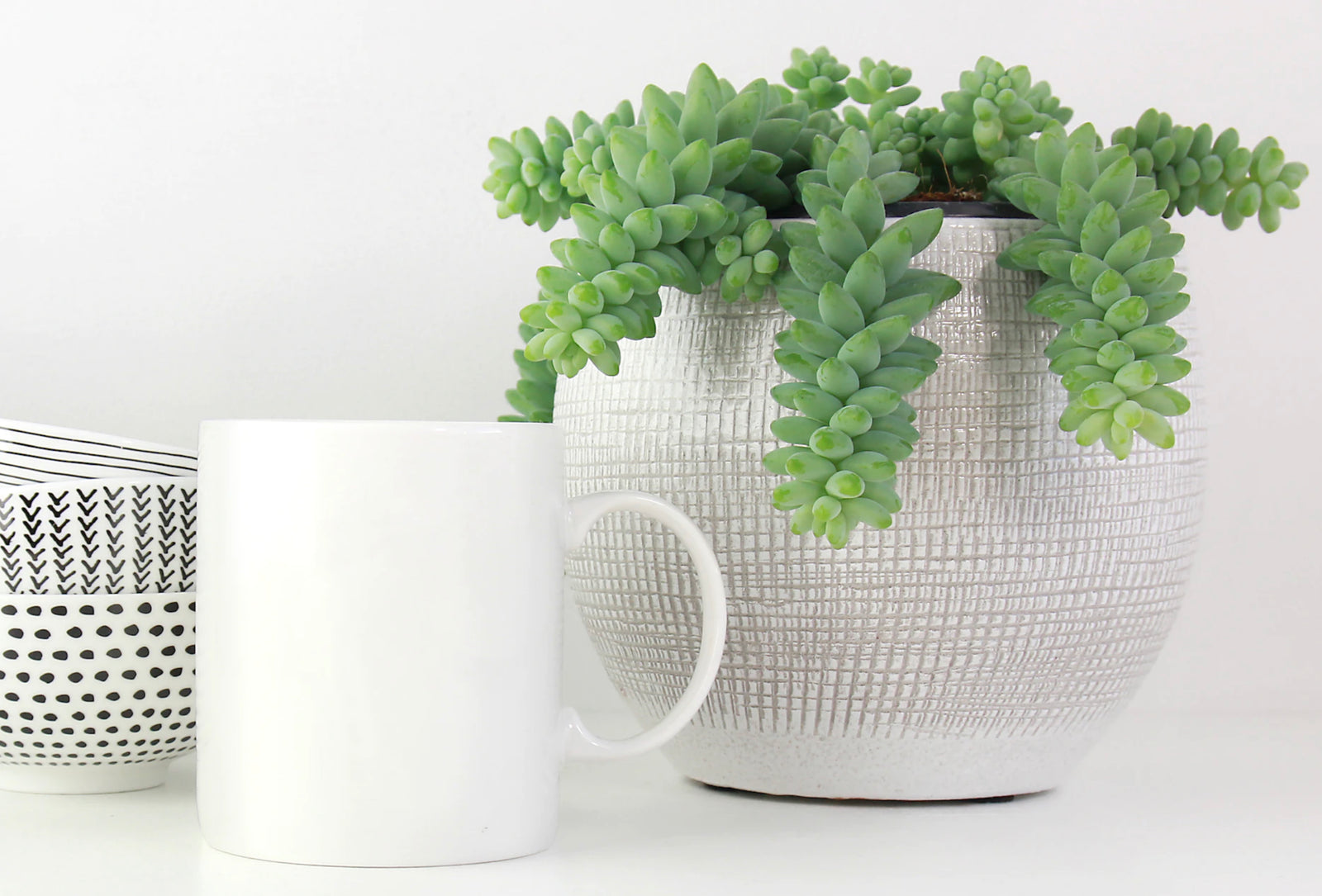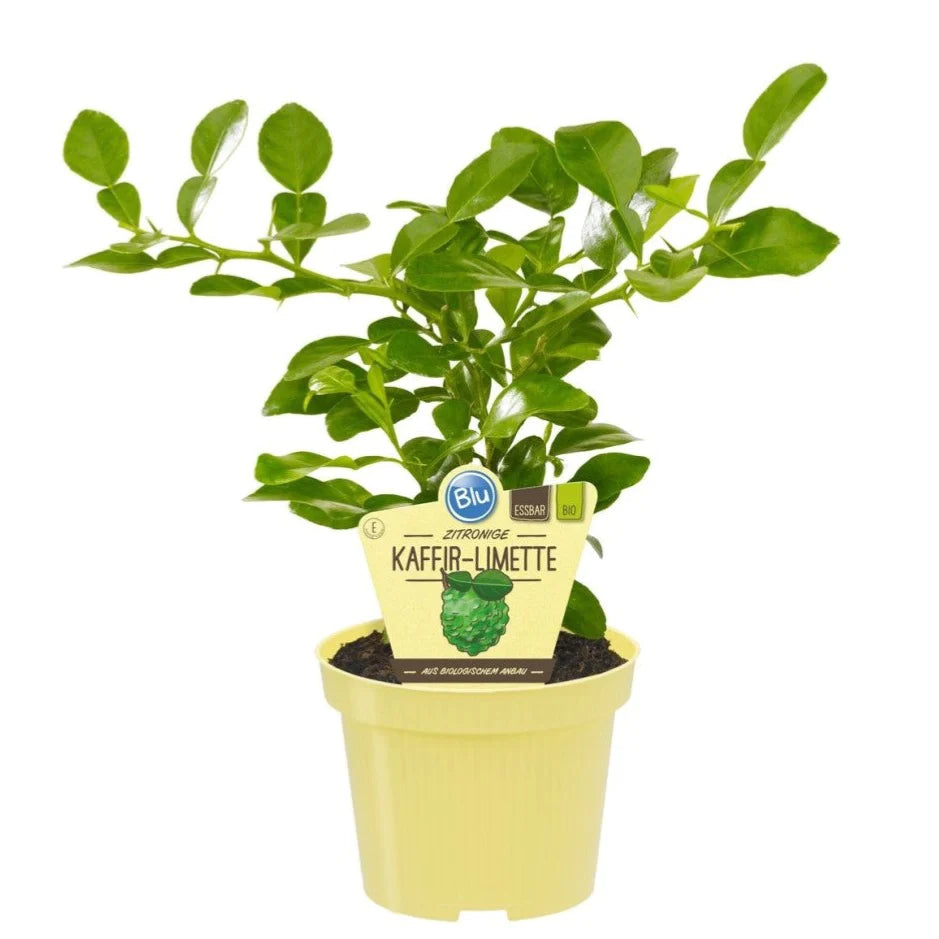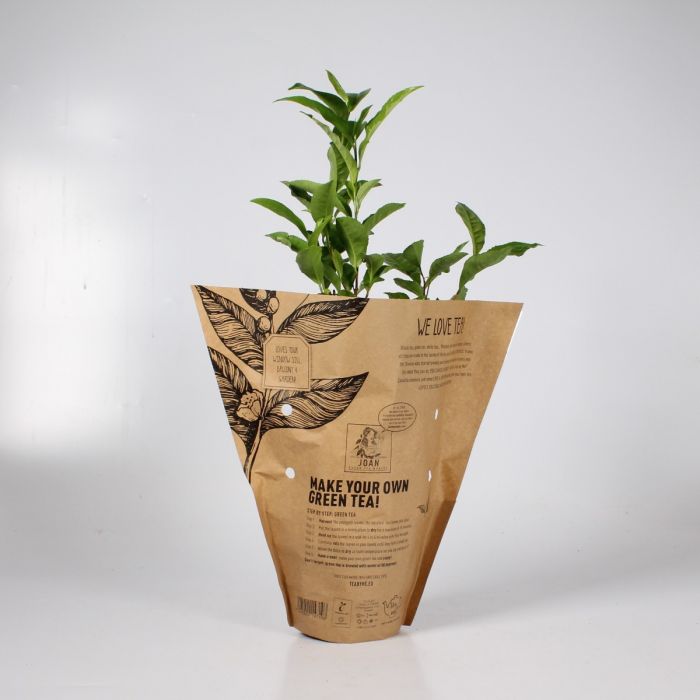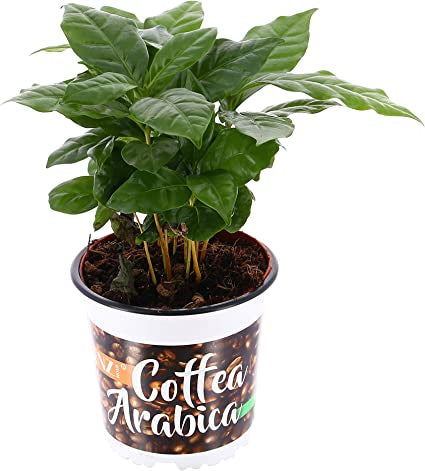Your Cart is Empty
FREE DELIVERY OVER £60
FREE DELIVERY OVER £60
PLANTS & FLOWERS
Office plants & Services
EXTERIOR PLANTING
CHRISTMAS TREES AND DISPLAYS
Sedum Burrito: The Ultimate Guide to Care and Maintenance
9 min read

Donkey's Tail, scientifically known as Sedum morganianum 'Burrito', is an excellent succulent plant with thick trailing stems that are covered with plump, blue-green leaves that overlap each other. During the summer season, star-shaped flowers in shades of pink or red may emerge at the tips of the stems. Although it's too tender for some climates, it can be grown as a houseplant, and it can also be moved outside during summer. With its unique appearance, this plant can be a great addition to hanging baskets.
Sedum Burrito is a variation of the Sedum morganianum and is categorized under the Crassulaceae family. It's a native plant of Mexico and Honduras, and it's not commonly found in the wild. Sedum morganianum burrito is a microendemic species, which means it's only found in a few limited locations in nature. This makes it a rare species that could be endangered if its habitat were destroyed.
This plant is grown worldwide as a houseplant, mostly in hanging baskets, allowing its vines to trail down. Sedum burrito is an easy plant to grow, but its delicate leaves can break off easily if mishandled. This succulent is also known as the "donkey tail" or "burro's tail" due to its vine-like appearance, although the burrito sedum has shorter and blunter leaves compared to the burro's tail plant.
Sedum burrito is a perennial plant that can grow stems up to 24 inches long. It has won the prestigious Award of Garden Merit by the Royal Horticultural Society due to its outstanding qualities. Sedum Burrito is classified as a soft succulent, with its plump, bead-like green leaves, which are tightly packed on stems that can grow up to 2 feet long. If allowed to mature for over five years, the stems can grow up to 4 feet long. The stems are thick and resemble braided cylinders. This plant can grow up to 8 inches tall and spread out about 20 inches.
The blue-green leaves of the Sedum Burrito plant are beautiful even without the flowers. The leaves have a waxy coating on them, which can be rubbed off easily with fingers, and they do not have any fragrance. However, this plant can produce star-shaped, magenta flowers during springtime, and its nectar attracts flying insects. The flowers usually grow in clusters of 1 to 6 on slender stems and have bright yellow stamens and light pink sepals. Sedum Burrito does not flower until its stems are at least nine inches long and have reached maturity.
In this guide, we'll answer some of the most common questions about Sedum Burrito to help you care for and maintain this beautiful plant.
What kind of light does Sedum Burrito need to thrive?
Sedum Burrito, also known as 'Burro's Tail,' requires bright, indirect sunlight to thrive. Direct sunlight can scorch its delicate leaves, so it's best to place it near a window that receives filtered or indirect sunlight for several hours each day. Too little light can cause the plant to become leggy and lose its characteristic plumpness.
If you're growing Sedum Burrito indoors, consider using artificial lighting, such as fluorescent or LED grow lights, to supplement natural light. This can be especially helpful during the winter months when sunlight may be limited.
How often should I water Sedum Burrito?
Sedum Burrito, also known as 'Burro's Tail,' is a succulent plant that stores water in its leaves, making it relatively drought-tolerant. As a result, it's important to be careful not to overwater it, as this can cause root rot and other issues.
The frequency of watering Sedum Burrito depends on several factors, such as the season, humidity levels, and the type of soil it's planted in. As a general rule, it's best to wait until the top inch or so of soil is completely dry before watering again. Depending on the conditions, this may be anywhere from one to three weeks.
In the summer months when the plant is actively growing, you may need to water more frequently, but be sure to allow the soil to dry out completely between watering. In the winter months when the plant is in its dormant period, watering can be reduced to once every three to four weeks.
When watering Sedum Burrito, it's important to water thoroughly and allow excess water to drain away. Be sure not to let the plant sit in standing water, as this can lead to root rot. Sedum Burrito is a drought-tolerant plant that prefers to be dry rather than wet.
Can I propagate Sedum Burrito?
Yes, Sedum Burrito is easy to propagate from stem cuttings.
If you want to know how to propagate Sedum burrito, also known as 'Burro's Tail,' there are a few methods you can use. The most popular method is through stem cuttings. Here's how to do it:
-
Choose a healthy stem: Select a healthy stem that is 4-6 inches long and has clusters of plump leaves.
-
Snip the stem: Snip the stem just below a leaf node using clean, sharp scissors or shears.
-
Let the stem dry: Place the stem on a paper towel for 1-2 days until the cut ends dry out and form a callus. This helps prevent infection while allowing the stem to absorb more rooting hormone in the next step.
-
Use rooting hormone (optional): If desired, dip the cut end of the stem in rooting hormone, which can help speed up the rooting process.
-
Plant the stem: Plant the stem in well-draining potting soil, burying 1-2 inches of the cut end in the soil.
-
Keep the soil moist: Keep the soil lightly moist and place the cutting in a warm spot with bright, indirect light. Using a heating mat can help maintain ideal temperatures for root growth.
-
Wait for roots: After 4-6 weeks, check for new roots emerging from the cut end of the stem.
-
Transplant: Once the roots have formed, gradually expose the new plant to more direct sunlight and less humidity to help it acclimate. After a week or two, your new Sedum burrito plant will be fully rooted and ready to grow into a full-size trailing beauty!
Propagation of Sedum burrito is a straightforward process that can be done with just a few simple steps. With a little patience and the right care, you can successfully grow new plants that are just as beautiful as the original.
How do I propagate Sedum Burrito from leaves?
Propagating Sedum Burrito from leaves is a simple and rewarding process. Here's how to do it:
-
Choose a healthy leaf: Select a plump, healthy leaf from your Sedum Burrito plant. Make sure it is fully mature and has no signs of damage or disease.
-
Remove the leaf: Gently twist the leaf from the stem of the plant, making sure to remove it cleanly and without damaging the stem.
-
Let the leaf callus over: Allow the leaf to dry out and callus over for 1-2 days. This helps to prevent infection and promotes rooting.
-
Plant the leaf: Place the leaf on top of well-draining soil mix and press it down lightly, making sure the base of the leaf makes contact with the soil. Do not bury the entire leaf.
-
Water the soil: Water the soil lightly to settle it around the base of the leaf.
-
Wait for new growth: Place the pot in a warm, bright location with indirect light. Keep the soil moist, but not too wet. Within a few weeks, you should see new growth emerging from the base of the leaf.
-
Transplant the new plant: Once the new plant has grown several inches, it can be transplanted into its own pot or container.
What kind of soil should I use for Sedum Burrito?
Sedum Burrito prefers well-draining soil that is slightly acidic. A mix of potting soil, sand, and perlite works well. Sedum Burrito, also known as 'Burro's Tail,' requires well-draining soil to thrive. It's important to use a soil mix that allows excess water to drain away quickly, as the plant is susceptible to root rot if its roots are consistently in wet soil.
A good soil mix for Sedum Burrito should be light, porous, and well-aerated. One popular option is a cactus or succulent soil mix, which is specially formulated to provide the well-draining conditions that succulent plants like Sedum Burrito require.
You can also create your own soil mix by combining potting soil, perlite or coarse sand, and vermiculite in a 2:1:1 ratio. This will provide the right balance of nutrients, drainage, and aeration that Sedum Burrito needs.
When planting Sedum Burrito, it's important to choose a pot with drainage holes to allow excess water to escape. If you're using a decorative pot without drainage holes, you can add a layer of gravel or pebbles at the bottom of the pot to help improve drainage.
How often should I fertilize Sedum Burrito?
Sedum Burrito is a succulent plant that doesn't require frequent fertilization. In fact, over-fertilizing can be harmful to the plant and cause damage to the roots.
It's generally recommended to fertilize Sedum Burrito once or twice a year, during the growing season. The best time to fertilize is in the spring, just as the plant begins to emerge from its dormant period, and again in mid-summer.
When choosing a fertilizer for Sedum Burrito, it's important to use a balanced, water-soluble fertilizer that is specifically formulated for succulent plants. A 10-10-10 or 20-20-20 fertilizer is a good choice, as it provides the right balance of nitrogen, phosphorus, and potassium that the plant needs to thrive.
To fertilize Sedum Burrito, dilute the fertilizer according to the manufacturer's instructions and water the plant as usual. Be sure not to over-fertilize, as this can lead to burned leaves or other issues.
How big does Sedum Burrito grow?
Sedum Burrito is a trailing succulent that can grow up to 2 feet (60 cm) in length if allowed to mature for several years. Its stems are thick and cylindrical, with leaves that are bead-like and packed tightly together along the stem.
As the plant grows, it may become top-heavy and require heasy planter to keep it steady.
It's worth noting that Sedum Burrito is a relatively slow-growing plant and may take several years to reach its full potential length. The growth rate can also vary depending on the growing conditions, such as temperature, humidity, and available light.
Is Sedum Burrito safe for pets?
Sedum Burrito is non-toxic to pets and humans. However, like most succulents, it can still cause digestive upset if ingested in large quantities, so it's best to keep it out of reach of curious pets.
What are the best ways to display Sedum Burrito in my home or office?
Sedum Burrito looks beautiful in a hanging basket or trailing from a shelf or windowsill. It can also be grown in a container with other succulents or used as a groundcover in a rock garden or outdoor landscape.
How do I care for Sedum Burrito during the winter months?
In the winter months, it's best to reduce watering and allow the soil to dry out completely between waterings. Sedum Burrito can tolerate cooler temperatures, but it's important to protect it from frost or extreme cold.
Are there any pests or diseases that I need to watch out for with Sedum Burrito?
While Sedum Burrito is relatively pest and disease-resistant, it can be susceptible to mealybugs or spider mites. If you notice any signs of infestation, treat the plant with an insecticidal soap or neem oil.
How do I know if my Sedum Burrito needs to be repotted?
There are a few signs that can indicate that your Sedum Burrito, also known as 'Burro's Tail,' needs to be repotted:
-
Root-bound: If the plant has been in the same pot for a long time, it may become root-bound, meaning the roots have grown to fill the container and have nowhere else to go. You may notice the roots poking out from the drainage holes at the bottom of the pot or growing on the surface of the soil.
-
Soil quality: Over time, the soil in the pot can become compacted, making it more difficult for water and nutrients to reach the roots. If you notice that the soil is consistently staying wet or the plant isn't growing as well as it used to, it may be time to repot.
-
Plant size: As Sedum Burrito grows, it may outgrow its current pot and need more space to spread out its roots. If the plant is starting to look top-heavy or the stems are trailing over the edge of the pot, it may be time to move it to a larger container.
If you notice any of these signs, it's time to consider repotting your Sedum Burrito. To repot, gently remove the plant from its current pot and shake off any loose soil. Place the plant in a new pot that is slightly larger than the old one, and fill in the gaps with fresh, well-draining soil mix. Water the plant thoroughly and allow it to drain before placing it back in its usual spot.
What are some common uses for Sedum Burrito in landscaping and gardening?
Sedum Burrito is a popular succulent plant that in the warm climate can be used in a variety of ways in landscaping and gardening. Here are some common uses for Sedum Burrito:
-
Groundcover: Sedum Burrito can be used as a groundcover in sunny areas, where it will trail along the ground and create a dense mat of foliage.
-
Container planting: Sedum Burrito is well-suited to container planting, and looks great in hanging baskets or spilling over the edges of pots and window boxes.
-
Rock gardens: Sedum Burrito is a great choice for rock gardens, where it can add texture and interest to the landscape.
-
Green roofs: Sedum Burrito is a popular choice for green roofs, where its drought-tolerant nature and low maintenance requirements make it ideal for rooftop gardens.
-
Terrariums: Sedum Burrito is also a great choice for terrariums, where its trailing stems and plump leaves can create a miniature landscape.
-
Border planting: Sedum Burrito can be used as a border plant along pathways or garden beds, where its trailing habit will create a soft, flowing effect.
-
Xeriscaping: Sedum Burrito is well-suited to xeriscaping, as it is drought-tolerant and can thrive in hot, dry conditions.

Order SEDUM BURRITO from us today!
Add some charm to your indoor garden with Sedum Burrito! Shop our selection of healthy and vibrant plants today.
Leave a comment
Comments will be approved before showing up.
Subscribe
Sign up to get the latest on sales, new releases and more …

















































